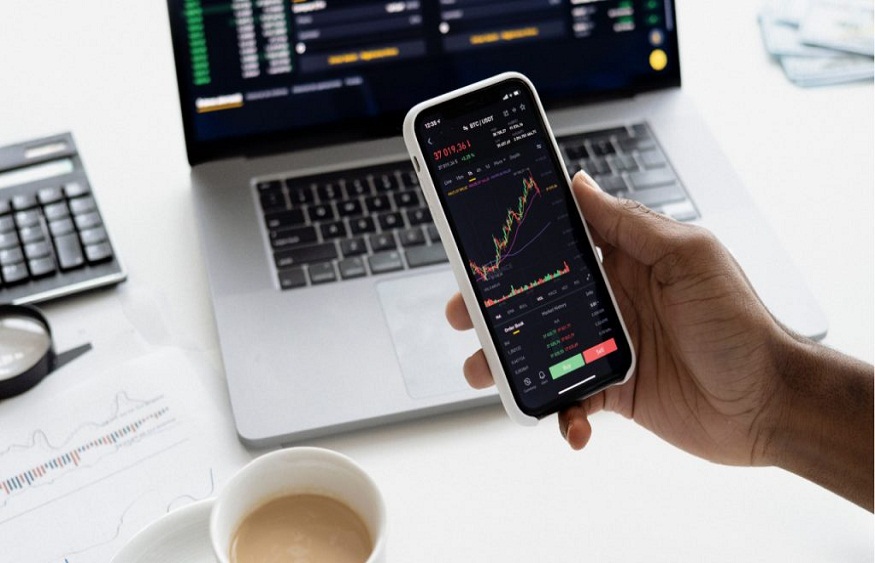In today’s digital age, technology has transformed every aspect of our lives, and the financial markets are no exception. With the growing popularity of stock market investing, more people are preferring online trading apps for quick, easy, and affordable access to financial markets. Finding the best trading app to suit your specific needs can be overwhelming given the variety of options available. Whether you are a seasoned investor or a newbie, choosing the right trading app is a crucial decision that can significantly impact your trading experience and profitability.
In this blog, we will walk you through some essential factors to consider when selecting a trading app, focusing on ease of use, fees, features, safety, and customer support.
1. Ease of Use and User Interface
For both beginners and experienced traders, ease of use should be at the top of the list when selecting a trading app. A user-friendly interface allows you to navigate the app smoothly, without getting lost in complex menus or features.
When evaluating an app’s usability, consider:
- Ease of registration and account opening: Is the onboarding process simple and fast? Apps that offer quick and seamless sign-ups are ideal, particularly for beginners.
- Dashboard and navigation: The app’s dashobad screen should provide a clear overview of your holdings, charts, and other relevant data without being cluttered.
- Order placement: The ability to place trades with minimal steps is critical. Look for apps where you can execute orders with just a few clicks or taps.
- Speed and responsiveness: The app should load quickly and be responsive to your inputs. This is essential in fast-paced trading environments.
2. Trading Fees and Costs
While all trading apps aim to provide you with access to financial markets, they come with different pricing models. Some offer zero-commission trades, while others charge fees for certain types of orders, research tools, or premium services. Always consider the cost structure of the trading app to avoid unexpected charges that might reduce your profits.
4. Advanced Features for Active Traders
If you’re a more experienced or active trader, advanced features such as real-time market data, technical analysis tools, and alerts can greatly enhance your trading strategies. Some features to look for include:
- Charting tools: Does the app offer customisable charts for technical analysis? Features like moving averages, candlestick patterns, and Bollinger Bands can provide valuable insights.
- Real-time data and news: Having access to real-time market data, stock price movements, and news is crucial for day traders or those engaging in high-frequency trading.
- Alerts and notifications: Apps that send you alerts based on price changes, news, or market conditions can help you stay on top of trading opportunities.
- Risk management tools: Look for stop-loss and take-profit options, margin calculators, and other tools to minimise risks during trading.
5. Safety and Security
When selecting a trading app, one of the most critical aspects to consider is security. Since you are dealing with sensitive financial information, the app must provide robust security measures to protect your account. Some factors to check include:
- Encryption: Ensure that the app uses strong encryption protocols to safeguard your personal and financial information.
- Two-factor authentication (2FA): Apps that offer two-factor authentication provide an additional layer of security by requiring a second form of identification during login.
- Regulatory compliance: The app should be regulated by the Securities and Exchange Board of India (SEBI) or another recognised financial authority in your region.
- Data privacy policies: Check whether the app adheres to strict data privacy regulations, ensuring that your information isn’t sold to third parties.
6. Customer Support and Educational Resources
Customer support can be a lifesaver, especially if you encounter any issues with transactions or account access. The best trading apps offer multiple channels for customer service, such as chat, email, or phone support. You should also check whether the support team is responsive and knowledgeable.
Additionally, many top-rated trading apps provide a wealth of educational content, including:
- Tutorials: In-app tutorials for first-time users.
- Webinars and blogs: For continuous learning and staying updated with market trends.
- Demo accounts: Some apps provide paper trading accounts, allowing you to practice trading without risking real money.
7. App Reviews and Ratings
Lastly, don’t forget to check the user reviews and ratings in app stores. Reviews can give you a good understanding of the app’s performance, usability, and overall experience from the perspective of real users. It’s important to weigh both positive and negative feedback to get a balanced view of the app.
Conclusion
Finding the best trading app depends on your specific needs, whether you’re a beginner looking for simplicity or an advanced trader seeking cutting-edge tools. Platforms like HDFC Securities offer a range of investment options, convenient banking services, and useful tools such as real-time data and expert insights, making them a solid choice for many investors. Also, ensure the app provides access to the markets and financial instruments you’re interested in along with excellent customer support. Take your time to compare multiple apps before making your decision, to find the right one that enables seamless trading.

